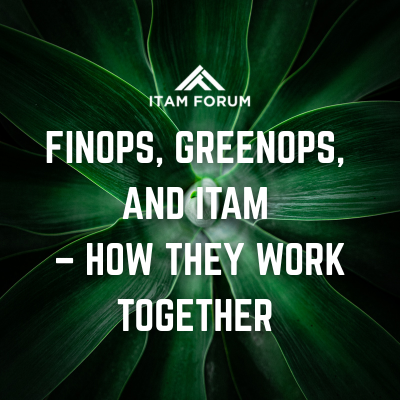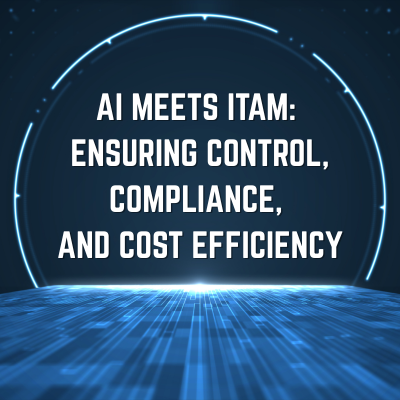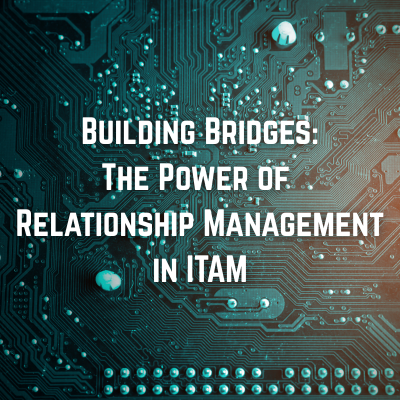A Strategic Approach to Managing AI as an IT Asset
Executive Summary
AI is not just another passing trend—it’s a transformative force reshaping industries at an unprecedented rate. However, like any new technology, its spread across the enterprise is following a familiar and potentially dangerous pattern. AI is rapidly expanding, often unchecked, creating an environment ripe for inefficiency, risk, and waste. But, it doesn’t have to be this way.
I argue that the solution lies in managing AI as an IT asset. Rather than slowing down AI experimentation, proper governance can enable experimentation within controlled, safe, and strategic boundaries. This paper outlines a path to managing AI responsibly while unlocking its full potential.
Key Takeaways
- Manage AI like an IT asset: Treat AI with the same rigour you apply to managing other IT assets. This includes discovery, classification, ownership, and cost control.
- Balance Governance with Innovation: AI governance doesn’t need to stifle innovation. In fact, proper governance can enable faster, safer experimentation by providing clear boundaries within which teams can innovate.
- Collaborate Across Teams: AI governance is a team sport. ITAM, InfoSec, finance, legal, and senior leadership all have a role to play in ensuring AI is used responsibly and strategically.
- Prepare for Compliance and Ethics: Don’t wait for regulations like the EU AI Act to hit you. Be proactive in building ethical and compliant AI systems from day one, turning potential regulatory burdens into innovation enablers.
AI is an extraordinary technology, capable of transforming industries in ways we can’t yet fully comprehend, but with this potential comes significant risk. The key to managing AI is not to stifle it but to create the frameworks that allow it to thrive in a responsible, secure, and innovative manner.
Download the white paper

Can’t find what you’re looking for?
More from ITAM News & Analysis
-
Stop Shadow IT Before It Hurts Your Business
Shadow IT often spreads quietly and quickly becomes a serious risk. Just look at the UK-based supermarket chain Co-op. A little-known remote maintenance tool used by an external IT provider was compromised. The result? Nearly 800 ... -
Why ITAM Forum Should Join the Linux Foundation: My Rationale and Your Questions Answered
TLDR. ITAM Forum has the opportunity to join the Linux Foundation as a stand-alone, self-funded project. This article covers a) What’s happening b) Why I think it’s a great move for the ITAM Forum and c) ... -
Microsoft Pricing Changes: EA Customers Face Price Increases
From 1st November 2025, Microsoft will remove all tiered pricing for Online Services under the Enterprise Agreement. This means all customers renewing or purchasing new Online Services after this date, will receive standard level A pricing ...
Software Licensing Training
Similar Posts
-
FinOps, GreenOps, and ITAM - How they work together
AJ Wit, Mark Bradley, and Ryan Hardcastle delves into the powerful intersection of financial, environmental, and asset management. This episode reveals how integrating these practices can help organisations control costs, reduce their environmental footprint, and meet ... -
From Chaos to Clarity: The Tier 1 Vendor Challenge
John Schwartzenberger from Flexera and Kelly Yip explores the complex reality of managing major software vendors in today’s IT landscape. Gain a clear understanding of why Tier 1 vendors are so difficult to control, how SaaS ... -
AI meets ITAM: Ensuring Control, Compliance, and Cost Efficiency
ITAM teams face new challenges in tracking AI software, managing dynamic licensing models, and controlling cloud costs. Without a clear strategy, organisations risk overspending, compliance issues, and a lack of visibility into AI-driven assets. Parpreet Singh ... -
Building Bridges - The Power of Relationship Management in ITAM
In this episode, Yvette Matthews and Ryan Hardcastle explore why strong relationship management is essential to successful ITAM. From driving collaboration to enabling meaningful change, we look at how building trust, improving communication, and fostering inclusivity ...




